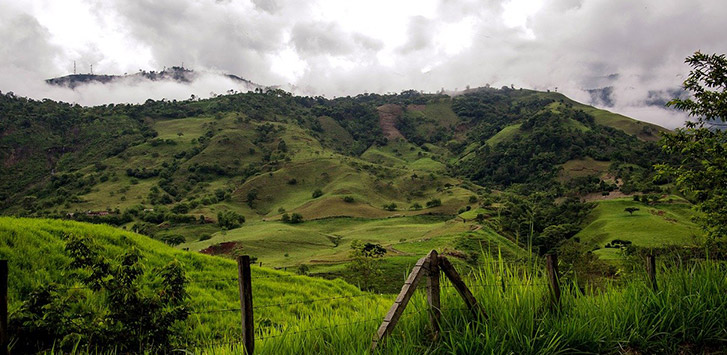
The coffee industry is no stranger to weathering storms––literally. In fact, a lot of consumers don’t know that green coffee is a crop, and more closely related to your salad than your delicious donut! And just like the vegetables and fruits we love to adorn our foods with, our coffee quality is subject to the climate’s inclinations––temperature, precipitation, winds, and humidity affect our coffee in nearly every aspect: from how it looks to how it tastes.
Impact by Country on Coffee Quality
Most of the best coffee in the world is born in Latin America. Brazil, Colombia, and Mexico all have the privilege of a luscious tropical climate, ample sunshine, bountiful water, and nutritious soil. Most importantly, there are usually no frosts in Latin America, but that changed in the middle of 2021 when a barrage of cold air took Brazilian farmers by complete surprise.
It was undoubtedly the worst frost Brazil had seen in nearly 50 years, and it hit the coffee farms hard. Where there were once fertile, glossy green fields as far as the eye could see, the land is now blanketed in muted, dreary browns and grays––the frosted foliage all-too prominent. Two-hundred-thousand hectares are now held back, and with it, rows and rows of coffee trees and shrubs completely faded away.
And this isn't even Brazil’s only challenge of 2021. They experienced wildfires from March to August, some of which were so destructive that they deforested most of the Amazon area and killed millions of animals. With the ecosystem disrupted, both flora and fauna struggled to work together in harmony to maintain Mother Nature’s standards.
And what’s more? A serious drought (the strongest in 90 years) threatened the natural water supply and, combined with the frost, severely damaged Brazil’s coffee sector. Currently, the country only receives ten to twenty percent of the rain that a coffee flower needs. As Brazil’s plant supply decreases, exporting speeds could be cut in half, which drives prices up as roasters buy the stocks that remain.
Senator of Espírito Santo, Evair de Melo, laments that “at least 12 million bags for the 2022 harvest” will be lost just from the frost damage. In their usual crop cycle, Brazil grows and exports about 40% of the world’s coffee, and the ambitious demand for nearly 170 million bags in 2022 causes exponential amounts of anxiety, considering the unpredictable natural disasters.It isn't until 2025 that he suspects Brazil will recover, and before then, existing coffee trees will have to be dug up, and top-tier irrigation systems will be run to combat any future frost.
The 2022-2023 coffee season will see some of the highest prices in ten years, but the price increase will be a chance to counteract lost revenue. As bleak as the situation is, there’s always glimmers of hope, and coffee producers are not slowing down.
According to National Geographic’s PLOS One study, the world’s coffee, avocado, and cashew population may be nearly unrecognizable in 3 years. The Brazilian natural disasters don’t necessarily help––Brazil is home to the Amazon, the world’s largest rainforest and a key player in the fight against climate change. Latin America isn't alone, either. Asian countries, such as Vietnam and Indonesia, are also experiencing their suitability decrease overall. African coffee capitals, such as Ethiopia, are projected to stay the same, but it’s only the fifth largest coffee producer.
Thankfully, adaptation is possible in order to save our favorite crops, but change in the climate will determine if, for example, in 2050, Brazil may not be the home of some of our favorite coffee. Only future weather predictions will tell, but in the meantime, the small farms that produce over one-third of the world’s food are doing everything they can to save their crops. Since changes in climate can bring harsh weather and more pests, the farmers are starting to practice new solutions, such as cover crops and breeding hardier coffee plants, but that process will take a few years to perfect.
In all of this, there’s good news. Farmers and scientists now have hindsight and foresight to help make a plan for what to expect and how to combat it. This will encourage farmers to invent better methods to satiate the world’s coffee addiction, but until then, we should give them our trust and optimism. There’s still hope for your morning cappuccino!